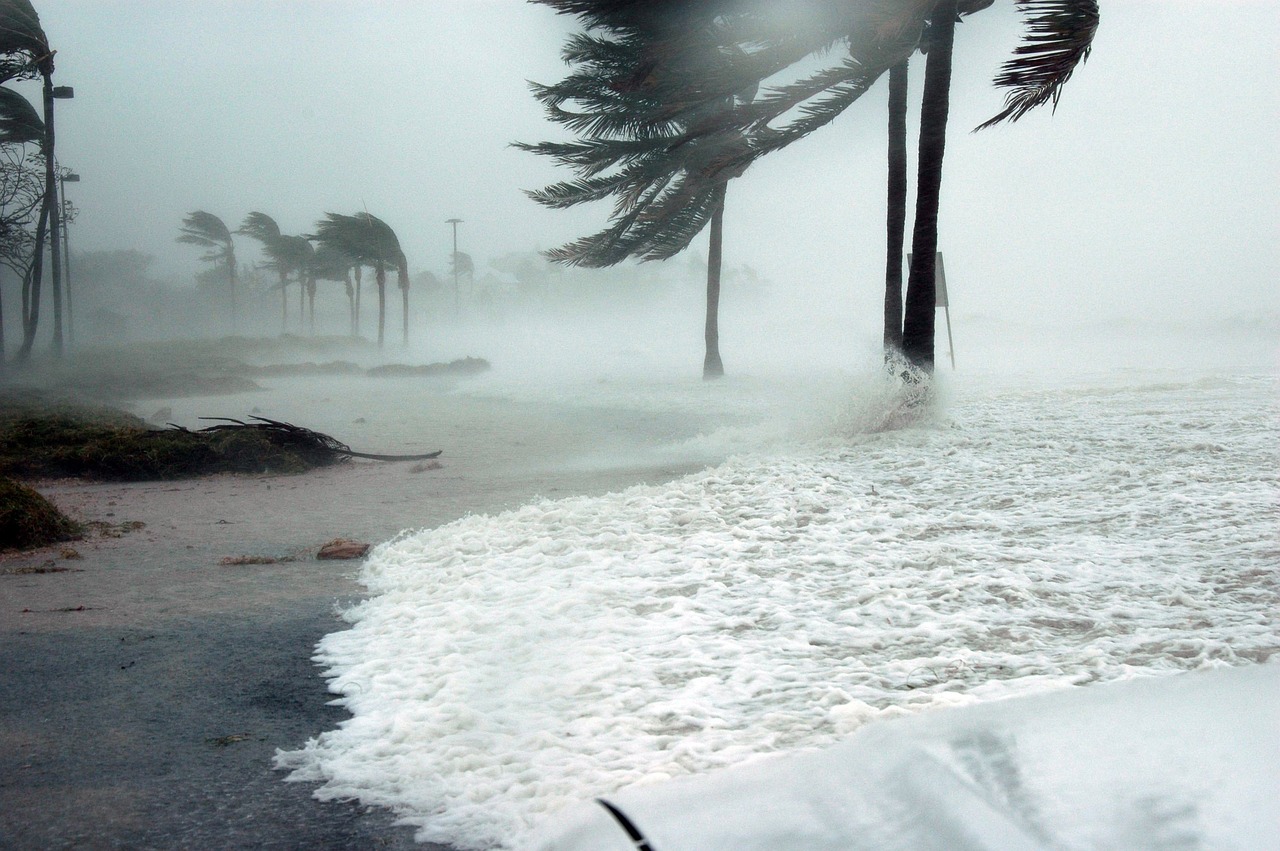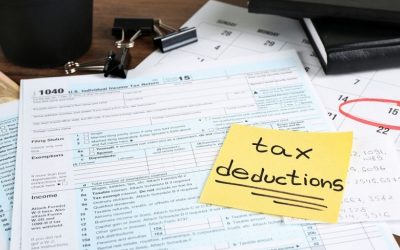Learn how to pass on more of your wealth to your heirs and pay less to the government before it's too late! Click here...
Address & Map
(602) 264 - 9331
CLIENT PORTAL
Address & Map
(602) 264-9331

Casualty, Theft and Disaster Losses
Hurricanes Harvey, Irma, Jose and Maria all made their impact felt back-to-back. Then in 2022,
we had Hurricanes Ian and Nicole hit many states. Images of flooded streets, devastated homes
and shattered families tugged at your heart. The year 2017 saw many disasters nationwide that
spurred Congress to pass the “Disaster Tax Relief and Airport and Airway Extension Act”. Due
to this Act, many changes have occurred that greatly benefit taxpayers who experience disaster
losses.
Rebecca’s family of six, living in Houston, was severely affected by the category 4 storm that hit
Texas. They lost their house and many valuables. While monetary compensation can never make
up for their loss, it can at least help them slowly regain normalcy, especially after the crippling
effect of the devastating disasters.
If you experience damage from a storm, theft, auto wreck, fire, flood, earthquake, break in,
terrorist event or other disaster, you need to contact the police and your insurance company.
Once you file a claim, your next step is to total the amount of your losses. After your insurance
company reimburses you (if any), your Casualty Loss is what is left over.
The tax relief or benefit of a casualty loss is an Ordinary Tax Loss on your tax return and
supplies tax relief that may PAY YOU in your time of need. This type of loss is an added tax
deduction, on top of any standard deduction you might take, and adds extra expenses to any
itemized deductions. While the disaster is terrible and may be devastating at the time, it’s
heartening to know that the IRS gives you some relief on any taxes you might otherwise pay.
If the disaster is in a Federal Declared Disaster Area or Zone, you will also qualify for a delay of
time on when your tax returns and tax payments must be filed or paid. Each disaster will have
different time limits, but you could get up to an extra year to have to file returns. See
Azmoneyguy or your tax professional for these time specifics.
Another relief you can receive help from is that if you need to withdraw funds from your
retirement account, you will not be hit with an early withdrawal penalty! This will save you 10%
of what you have withdrawn (that’s the amount of the early withdrawal penalty, normally).
Those taxpayers who might be able to claim Earned Income Tax Credit or Child Tax Credit
(EITC and CTC) also receive some relief, for the disaster tax year. As an example, individuals
affected by Hurricanes Ian and Nicole, who earned less income in 2022 than 2021, can use the
2021 amounts reported, to claim EITC or CTC in 2022.
Also, you might be able to take the current loss backward and amend your past tax returns for
immediate refunds. For example, a loss that occurs in 2023 can be listed on your amended 2022
tax return, so that you can immediately file for a refund and use the money to help you get back
on your feet. Use IRS forms 4684 and 1040X to amend past returns. Or you may use the amount
of your disaster loss on your current year tax return, on IRS form 4684 if it has not been filed yet.
It is possible for a casualty loss to use up all income for the past year, plus your current year.
This is known as a Net Operating Loss (NOL). If the loss is large enough, you may have no taxes
for the past year, the current year, or some future years, depending on how great the loss is
compared to your income. If casualty losses exceed your income, you have a loss in that year and
could pay no taxes. And you get to carry excess losses backwards or forwards, to help you get
back on your feet.
Here are some things to remember:
- Losses can occur for many reasons: theft, fire, storm, auto wreck, earthquake, terrorist
event and other sudden disasters. - The amount of the loss, after insurance reimbursement, is your Casualty Loss deduction.
- You can amend your prior years’ tax returns for the current loss you experienced (File
IRS forms 4684 and 1040X), or you can use the Casualty Loss in the current year (your
choice) - You may qualify for delayed time to both file returns and pay taxes up to a year after the
normal due date. - Money withdrawn from retirement accounts will not get hit with the early withdrawal
penalty (10% of the amount withdrawn, usually) - Those who qualified for EITC and CTC in the past year might be able to use that income
amount for the current year, to qualify again for extra refunds. - If the amount of loss is great enough to absorb all your income, you have a Net Operating
Loss (NOL) and you can carry the loss forward into future years, until the loss is used
(investments that were stolen by Bernie Madoff in 2008 were carried backward and/or
forward if it exceeded current incomes). These losses helped some taxpayers to not pay
taxes for many years, depending on each person’s circumstances. - Only disasters declared by the President, qualify for tax relief, stated above. Go to
fema.gov and make sure your state had a declared disaster for the year you are filing for.
Call today, don’t delay! See how this affects you. We can be reached at 602-264-9331 and on all social media under azmoneyguy.
Related Blog Posts
Deductions allowed when you do not itemize
www.AZMONEYGUY.com(602) 264-9331 Call 24x7Blog Deductions allowed when you do not itemize [DISPLAY_ULTIMATE_SOCIAL_ICONS] There are lines and then there are fine lines that can be read to understand better about the available options for deductions on tax returns....
Basis, Capital Gains, and Losses
www.AZMONEYGUY.com(602) 264-9331 Call 24x7Blog Basis, Capital Gains, and Losses [DISPLAY_ULTIMATE_SOCIAL_ICONS] Now is the time to act smart, so that you can cut down your taxes by ensuring your basis on your investments is correct. Pauline, an entrepreneur who had...
Tax Return Corrections and Tips for next Tax Year
www.AZMONEYGUY.com(602) 264-9331 Call 24x7Blog Tax Return Corrections and Tips for next Tax Year [DISPLAY_ULTIMATE_SOCIAL_ICONS] To err is human and errors happen sometimes, especially if you must hurriedly prepare for your tax returns like Charlie. But to Charlie’s...
Do You Owe The IRS?
Learn 5 Secrets The IRS Doesn’t Want You To Know.
Click on the button below to get FREE access to this exclusive content.
Get Expert Tax Advice from an expert
Mr. Hockensmith has been a guest newscaster for national and local TV stations in Phoenix since 1995, broadcasting financial and tax topics to the general pubic. He has written tax and accounting articles for both national and local newspapers and professional journals. He has been a public speaker nationally and locally on tax, accounting, financial planning and economics since 1992. He was a Disaster Reservist at the Federal Emergency Management Agency, for many years after his military service. He served as a Colonel with the US Army, retiring from military service after 36 years in 2008. Early in his accounting career, he was a Accountant and Consultant with Arthur Andersen CPA’s and Ernst & Young CPA’s.
Build strategies, build confidence, build your business.
We are ready to do business with you
Email: [email protected]
Tel: (602) 264-9331 (24x7)
Address:
3404 West Cheryl Drive
Suite A-170
Phoenix, AZ, 85051









